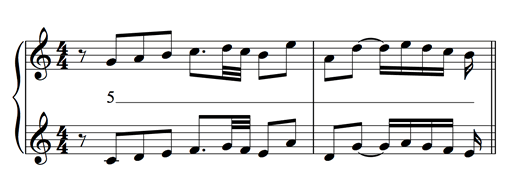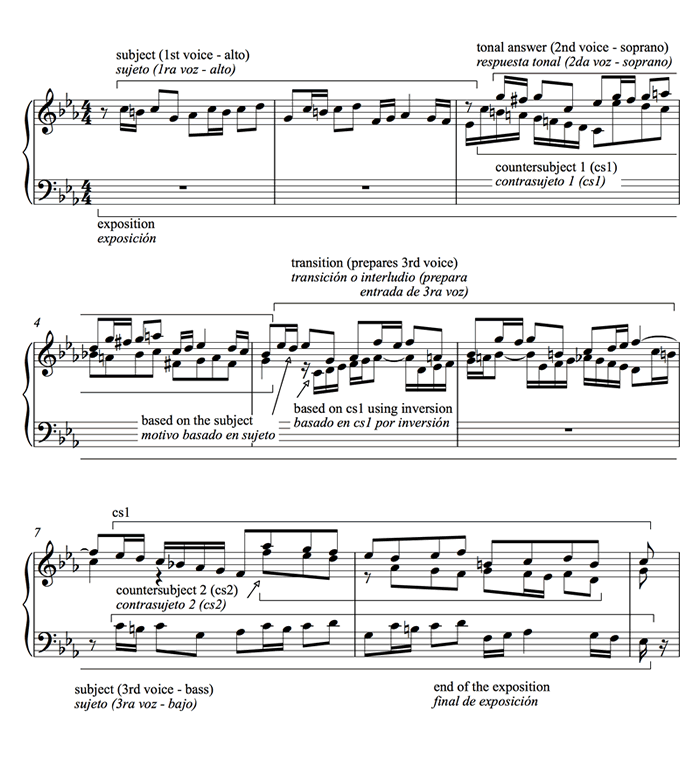Forms : The Fugue
A fugue begins with an exposition. After the exposition, the composer alternates between episodes and subject presentations. Each fugue has its own structure, which changes according to the composer's invention and needs.
The exposition
The first part of the fugue is the exposition. The exposition begins with one of the voices presenting the subject or theme of the fugue. A second voice follows with the answer (we will discuss later what makes an answer different from the subject). The other voices continue to present subjects and answers. When all voices have presented a subject or answer, the exposition ends. In a 3-part fugue we would have subject, answer, subject. In a 4-part fugue we would have subject, answer, subject, answer.
The subject
The subject is the theme of the fugue. In this example from Bach's C Minor Fugue BWV 847, the alto begins with the subject:

The answer
After the soprano has presented the subject, the alto continues with the answer. In this fugue, the subject begins on C, while the answer begins on G. The answer is the subject transported by an ascending fifth or descending fourth:

This answer is a tonal answer. Why? If we compare the subject (lower staff) and the answer (upper staff), we see that the answer is not always a perfect fifth higher. Why is that? The harmony in these bars is tonic, so using an D instead of a C (in red) would create a dissonant note. The composer following a tonal reason may make subtle changes in the transposition. This is why we call this answer a tonal answer:

Subject
These are also real answers. In the C major Fugue BWV 846, the answer is transported precisely:

The answer in the upper stave, the subject in the lower stave:

The countersubject or free counterpoint
The first voice continues with a counterpoint while the second voice plays the answer. The same thing happens when the third voice enters. These counterpoints are called countersubject if they are used regularly in the fugue. If the counterpoint is different each time, it is called free counterpoint. In the C minor fugue, we have 2 countersubjects. Here is the structure of the exposition:
| S | Answer | transition | Countersubject 1 | |
| A | Subject | Countersubject 1 | Countersubject 2 | |
| B | Subject |
Between the answer of the soprano and the subject of the bass, Bach adds almost two bars to prepare the entrance of the third voice (the bass). This transition is called a codetta, an interlude, or episode, and is built from material in the subject and counter-subject. Here is the complete exposition:

